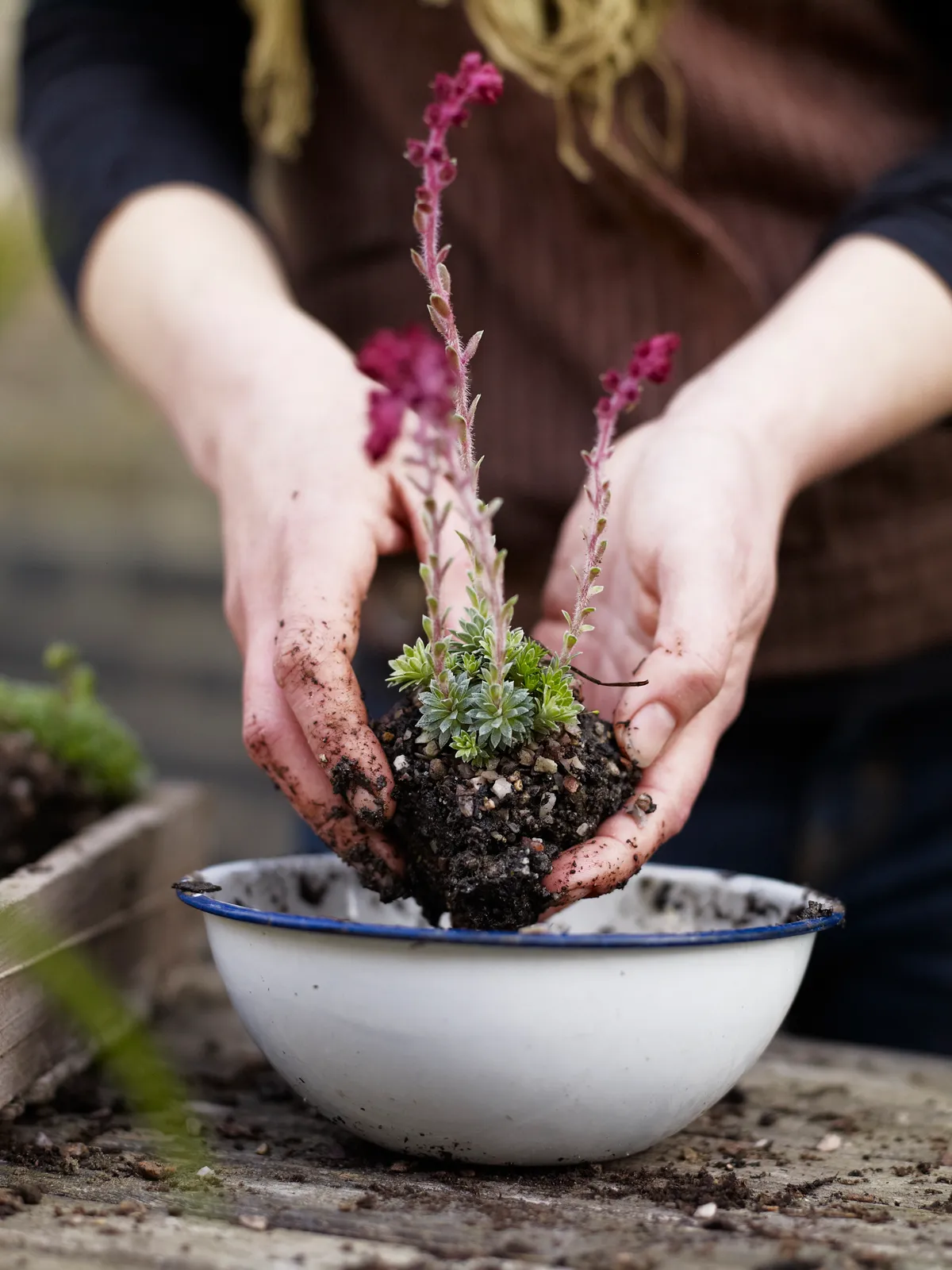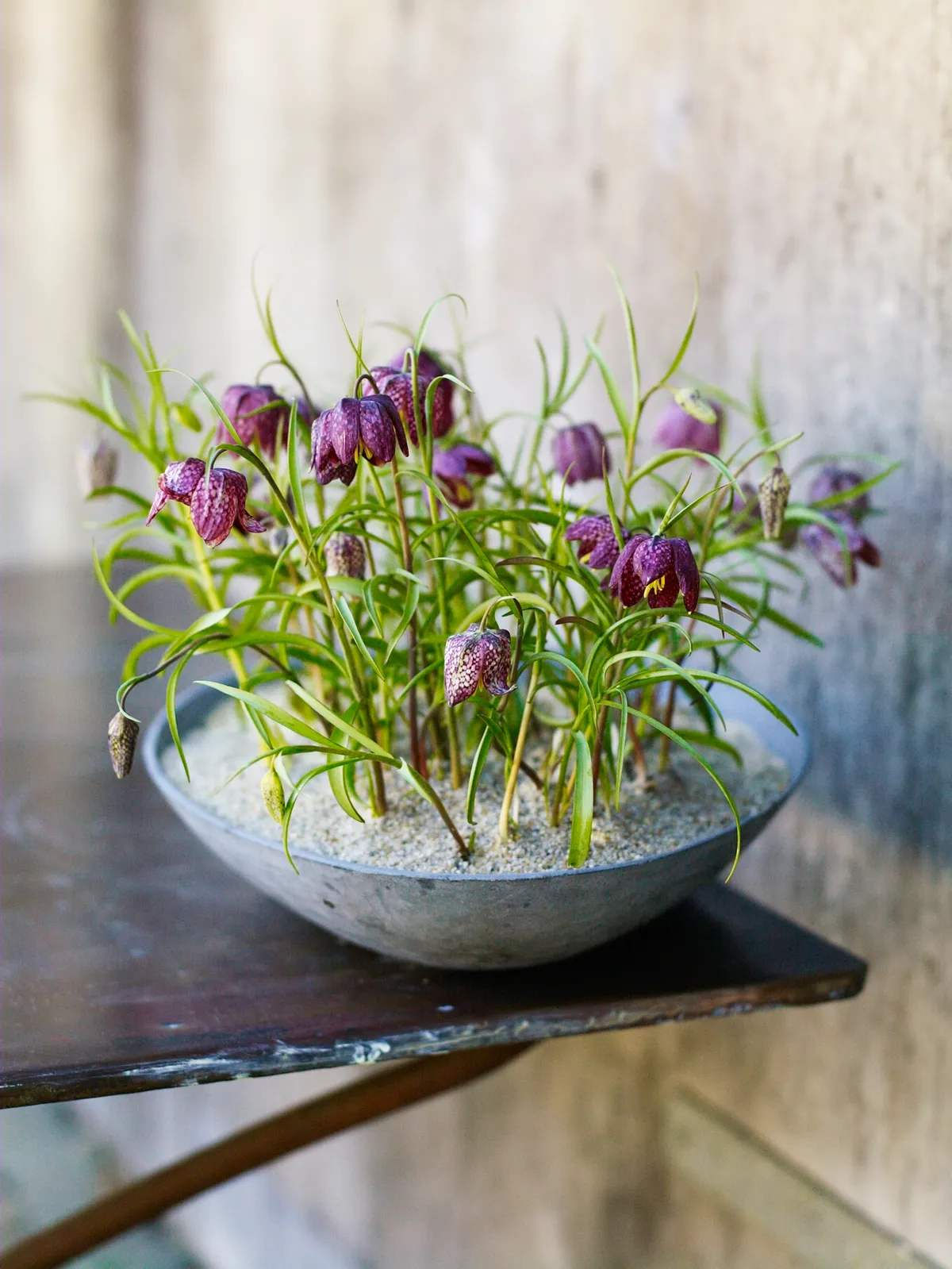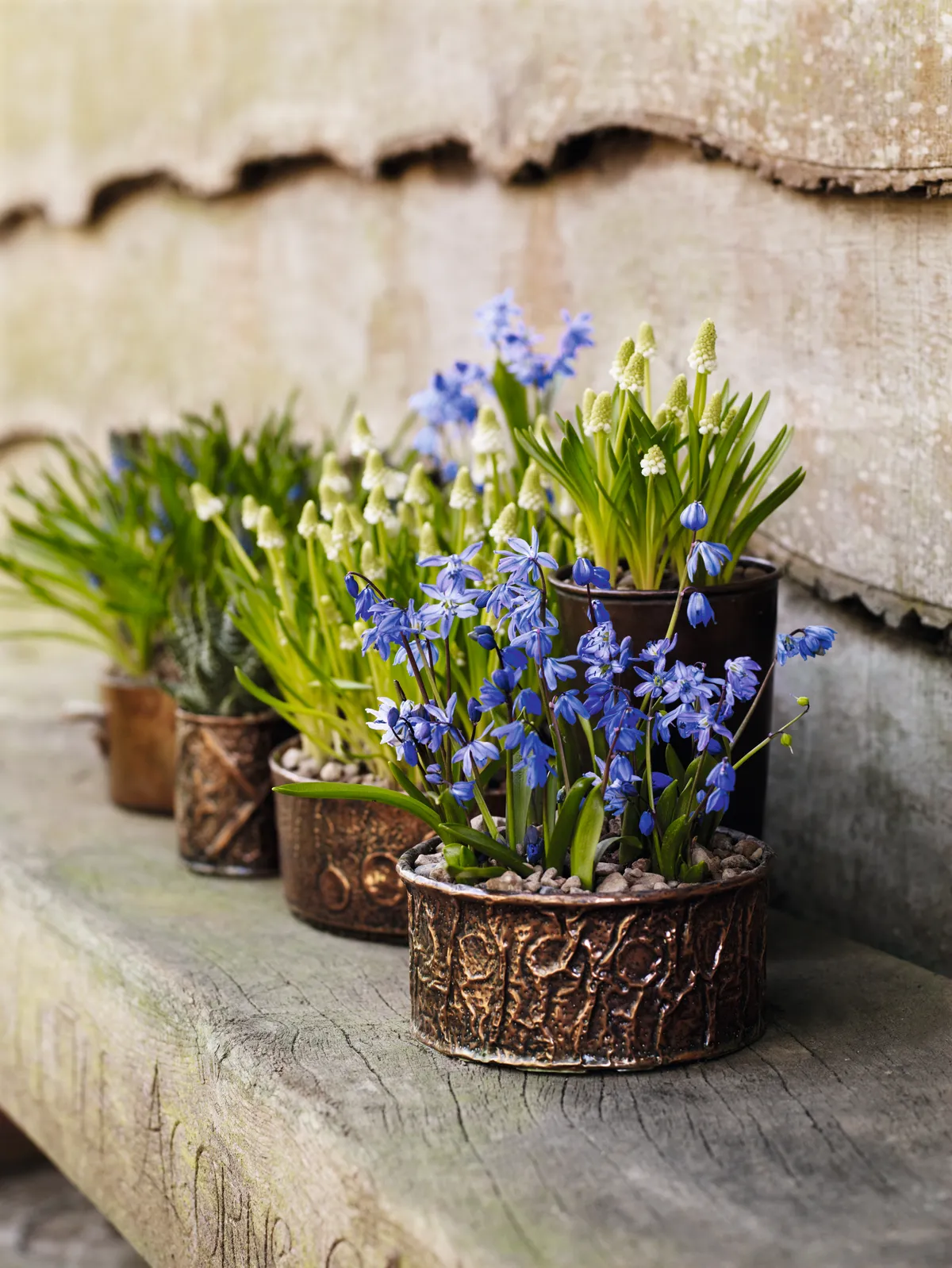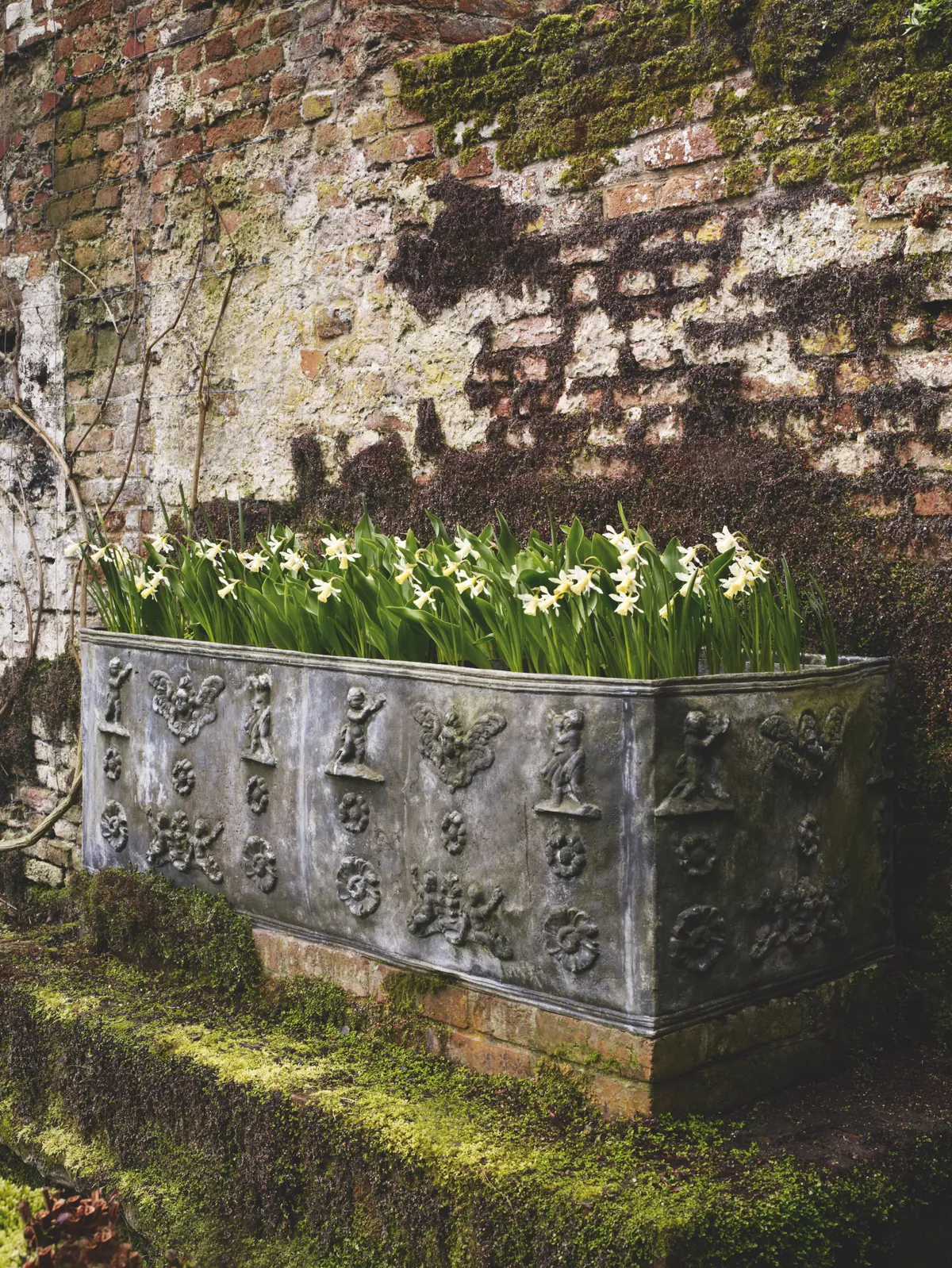The oft-repeated mantra 'right plant, right place' applies as much to bulbs in pots as to those in a garden. Many plants thrive in pots and bulb planting in pots allows for a much more flexible display, a moveable feast for the eyes, that you can adjust and update throughout the year. In autumn, gardeners are thinking about planting spring bulbs, and it's worth taking the time to consider planting combinations, where you want the display to sit, plus the size and style of your pot.
Below you'll find the do's and don'ts of container gardening and inspiring ideas for using bulbs in pots. Don't miss our guide on when to plant bulbs.
How to plant bulbs in pots
Follow these ten top tips to ensure you get the best from your bulb pots

DO fill the bottom few inches of the planter with crocs – broken terracotta pots work well – to help with drainage and reduce the amount of compost you need.
DO use a good compost. Loam-based composts, mixed with grit or crushed bark, formulated for container growing, are far better than multi-purpose composts. Read our detailed guide to the best composts.
DO feed your plants regularly during the summer months. Flowering plants should be fed once a week with a liquid fertiliser during their flowering period.
DON'T forget that plants in pots and containers need a considerable amount more watering than those in the garden. During really hot days water at least once a day.
DO add water-retaining crystals to the compost. Containers will dry out much more quickly than borders and the crystals will help store water. Using a mulch will also help retain moisture.
DO buy the best terracotta pots and containers you can afford. Cheap terracotta pots with flack or crack during hard frosts.
DON'T forget pests and diseases. Plants grown in containers are under more stress than those in the garden so are more susceptible to pests. Treat regularly for aphids, slugs and mildew.
DON'T skimp on the size of the pot or container. Most plants look much better in big groups in large pots.
DON'T forget that your pots and containers will be heavy, so plant them where you want them to end up or alternatively use specially-designed pot rollers or a trolley.
DON'T overdo the number of plants you use. Although when you first plant up a container it may look skimpy the plants will soon grow and spread to fill out your pot.
Inspiration for planting bulbs in pots
Here are three container displays that celebrate the beauty of bulbs. Some have been planted en masse to stunning effect, or grouped together to give a strong sense of the arrival of spring.
A bowl of Fritillaria

This display uses Fritillaria melegaris bulbs, delicate snake's head fritillaries. By planting them in a bowl, they can be elevated to a prominent position and their stunning checkered bell-shaped blooms can be fully appreciated.
Fritillaria bulbs are very fragile and can often dry out in storage. To give your display every chance of success, soak them in lukewarm water for a few hours before planting. You can also buy them 'in the green' in spring. If you're planting bulbs in autumn, plant them as soon as possible in early autumn in moist, humus-rich, loam-based compost at four times their own depth, ensuring that the pots have holes for drainage. Protect with plastic netting or chicken wire.
Using small pots helps to prevent disturbing their roots when eventually planting out and if grouped together on a window ledge or table in decorative containers they will still create the meadow look.
Use 30-50 bulbs. The display will be in flower from March until May.
Here's everything you need to know about growing fritillaria
Grouped grape hyacinths and scillas

The arrival of spring is always a time for gardeners to celebrate, but we can often overlook some of the smaller flowering bulbs, such as the lovely, classic grape hyacinths.
This display combines Muscari aucheri 'White Magic', a very fragrant white cultivar, and Muscari armeniacum, which produces fragrant blue flowers from April to May and is followed by decorative seedheads.
Also seen is Scilla siberica (squill). Planting muscari in pots to bring indoors not only allows us to appreciate their beauty in greater detail, but it is also a great way to experiment with new bulbs in small numbers. The copper pots add a stylish edge to the display.
Read our advice on growing scilla.
Pot the bulbs up in autumn, using a loam-based compost with extra sand for drainage and leaf mould for the squills as they appreciate humus-rich soil. Leave outside in a sheltered spot and bring into a polytunnel in January to encourage early flowering. You can transfer the plants into their final containers as they come into flower. Top dress them with garden gravel for a finished look.
Grape hyacinths require plenty of light but not direct sunlight and will benefit from a liquid seaweed feed after the display has finished. Leave the foliage to die down before planting out in lawns or borders.
Daffodils en masse

Using pots offers you the great convenience of setting down a haze of colour just when you need it. But when you're using narcissi you can easily end up with an arrangement that has an unnatural look or one that is too yellow biased. Narcissi (daffodils) work best if you plant separate pots of just a few carefully selected kinds or, if the pot is impressive enough, one single star variety.
This display uses Narcissus 'Elka'. It's a delicate daffodil with ivory-white petals and a pale-yellow trumpet that fades to china white. It also has a scent that is light and sweet.
Narcissi bulbs need to be in the ground by September and if grown in pots need plenty of grit, roughly one part grit to three parts John Innes No 1. A pot 80cm in diameter can take up to 75 bulbs of mid-sized narcissus. With troughs, ensure the drainage hole is kept open by using crocks over it.